Themed collection Protein engineering through chemical, genetic and computational manipulation

Protein engineering through chemical, genetic and computational manipulation
Guest editors Itaru Hamachi and Gonçalo Bernardes introduce the Protein Engineering themed issue of Chemical Society Reviews.

Chem. Soc. Rev., 2018,47, 8977-8979
https://doi.org/10.1039/C8CS90125B
Functional protein nanostructures: a chemical toolbox
Functional protein nanostructures hold immense potential for a broad range of applications, e.g., in material and biomedical sciences. In this article, the development of chemical toolboxes to build precise functional protein nanostructures that go beyond Nature's portfolio and their applications are summarized.
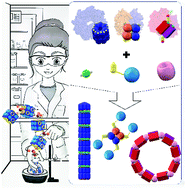
Chem. Soc. Rev., 2018,47, 9069-9105
https://doi.org/10.1039/C8CS00590G
Third generation antibody discovery methods: in silico rational design
Computational antibody design can now consider the complex biophysics of antibodies and the stringent requirements of therapeutic applications.
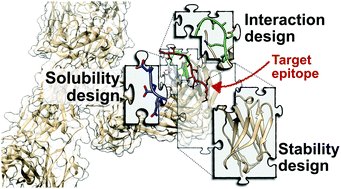
Chem. Soc. Rev., 2018,47, 9137-9157
https://doi.org/10.1039/C8CS00523K
Recent progress in enzymatic protein labelling techniques and their applications
This review describes recent progress in employing enzymatic labelling techniques to modify proteins for a diverse range of applications.
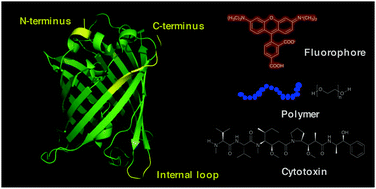
Chem. Soc. Rev., 2018,47, 9106-9136
https://doi.org/10.1039/C8CS00537K
A guide to maximizing the therapeutic potential of protein–polymer conjugates by rational design
Careful planning in the selection of the protein, polymer, conjugation chemistry, and analysis can help maximize the potential of protein–polymer conjugates for therapeutic applications.
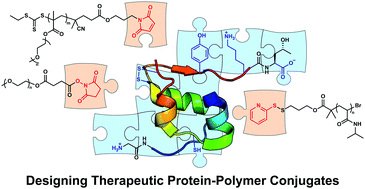
Chem. Soc. Rev., 2018,47, 8998-9014
https://doi.org/10.1039/C8CS00606G
Native chemical ligation in protein synthesis and semi-synthesis
Combining modern synthetic and molecular biology toolkits, native chemical ligation and expressed protein ligation enables robust access to modified proteins.
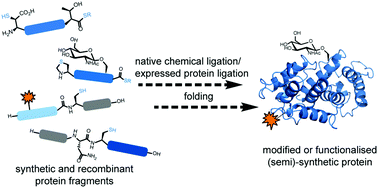
Chem. Soc. Rev., 2018,47, 9046-9068
https://doi.org/10.1039/C8CS00573G
Engineering more stable proteins
The dynamic native, functional folded forms of proteins are unstable mainly because they readily unfold into flexible unstructured forms.
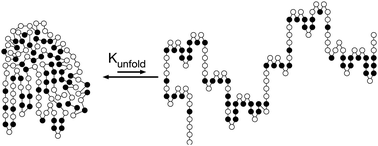
Chem. Soc. Rev., 2018,47, 9026-9045
https://doi.org/10.1039/C8CS00014J
Engineering enzymes for noncanonical amino acid synthesis
This tutorial review covers contemporary case studies of successful protein engineering to provide new noncanonical amino acid synthases, with emphasis on methods, outcomes, and mechanistic insights.
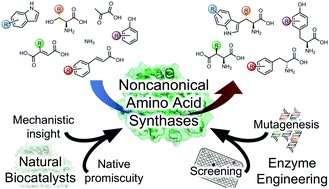
Chem. Soc. Rev., 2018,47, 8980-8997
https://doi.org/10.1039/C8CS00665B
Antimicrobial glycoconjugate vaccines: an overview of classic and modern approaches for protein modification
Glycoconjugate vaccines obtained by chemical linkage of a carbohydrate antigen to a protein are part of routine vaccinations in many countries.
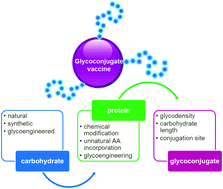
Chem. Soc. Rev., 2018,47, 9015-9025
https://doi.org/10.1039/C8CS00495A
About this collection
We are delighted to present a Chemical Society Reviews themed collection on “Protein engineering through chemical, genetic and computational manipulation”, Guest Edited by Goncalo Bernardes and Itaru Hamachi. Proteins consist of long strings of amino acids, and the order and identity of these amino acids, and the way the proteins then arrange themselves into 3D structures are key to their biological function. In addition, these structures may be altered during and after translation to incorporate additional groups that act as specific messengers. The study of protein structure, function and the assignment of the biological roles of proteins carrying different modifications is difficult, but new methods from genetics to chemistry are now enabling to determine the precise correlation between structure and function. This themed issue focuses on methods for protein engineering, from site-specific chemical and genetic installation of modifications on proteins to the design of completely new proteins through rational design.